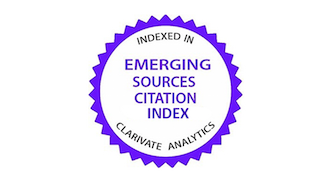Bioestimulación radical y radiación solar en plantas de Coffea arabica L. en etapa de vivero
DOI:
https://doi.org/10.15517/am.2024.59975Palabras clave:
algas marinas, clorofila total, micorrizas, polímeros orgánicosResumen
Introducción. En etapa de vivero se pueden conformar plantas de Coffea arabica L. con calidad que reduzcan los efectos estresantes después del trasplante, aumenten la eficiencia fotosintética y mantengan una tasa de crecimiento constante. Objetivo. Evaluar el efecto de bioestimulantes y radiación solar en el crecimiento y la fisiología de plantas de Coffea arabica en etapa de vivero. Materiales y métodos. Los experimentos se realizaron dentro de un microtúnel en la Benemérita Universidad Autónoma de Puebla, México, con una duración de 270 días, en los años 2018 y 2022. Se utilizó un diseño factorial en bloques con tres factores: bioestimulantes (testigo, hongos micorrízicos, algas marinas y polímeros orgánicos), radiación (81, 168, 278 y 440 μmol m-2 s-1) y variedades de Coffea arabica (Costa Rica 95, Marsellesa, Caturra Roja y Garnica). Se determinó la colonización micorrízica (CM), la proporción del sistema radical (PSR), la tasa de crecimiento (TC), la proporción de parte aérea (PPA), las clorofilas y el contenido nutricional. A los datos se les aplicó un análisis de varianza para detectar diferencias entre tratamientos. Resultados. A los 270 días después de la siembra, la variedad Marsellesa, bioestimulada con hongos micorrízicos y expuesta a una irradiancia de 168 ± 36 μmol m-2 s-1, alcanzó valores altos de CM con 36,51 % y TC con 0,175 g g-1 día. En Costa Rica 95 y Marsellesa, la bioestimulación con polímeros y una irradiancia de 440 ± 59 μmol m-2 s-1 se relacionaron significativamente (p ≤ 0,05) con incrementos de 3,08 mg g-1 PMF (peso de la materia fresca) en clorofila total. En Marsellesa, la bioestimulación con polímeros y una irradiancia de 168 ± 36 μmol m-2 s-1 resultaron en mayores contenidos de N, P, K, Ca y Mg. Conclusiones. La bioestimulación radical con hongos micorrízicos y niveles de radiación de 168 a 278 μmol m-2 s-1 propiciaron un mejor desarrollo en plantas de cafeto.
Descargas
Citas
Abdelaal, K. A. A., Attia, K. A., Alamery, S. F., El-Afry, M. M., Ghazy, A. I., Tantawy, D. S., Al-Doss, A. A., El-Shawy, E.-S. E., Abu-Elsaoud, A. M., & Hafez, Y. M. (2020). Exogenous application of proline and salicylic acid can mitigate the injurious impacts of drought stress on barley plants associated with physiological and histological characters. Sustainability, 12(5), Article 1736. http://dx.doi.org/10.3390/su12051736
Aguilar-Luna, J. M., Loeza-Corte, J. M., & Díaz-López, E. (2022). Interactive effect of moisture restriction and salicylic acid on biochemical responses in Phaseolus coccineus. Revista de la Facultad de Agronomía de la Universidad del Zulia (LUZ), 39(3), Article e223940. https://doi.org/10.47280/RevFacAgron(LUZ).v39.n3.06
Carter, M. R., & Gregorich, E. G. (2008). Soil sampling and methods of analysis (2nd ed.) Taylor & Francis Group, LLC.
Chekri, R., Noël, L., Millour, S., Vastel, C., Kadar, A., Sirot, V., Leblanc, J.-C., & Guérin, T. (2012). Calcium, magnesium, sodium and potassium levels in foodstuffs from the second French total diet study. Journal of Food Composition and Analysis, 25(2), 97–107. https://doi.org/10.1016/j.jfca.2011.10.005
DaMatta, F. M., Loos, R. A., Silva, E. A., & Loureiro, M. E. (2002). Limitations to photosynthesis in Coffea canephora as a result of nitrogen and water availability. Journal of Plant Physiology, 159(9), 975–981. https://doi.org/10.1078/0176-1617-00807
De Beenhouwer, M., Aerts, R., & Honnay, O. (2013). A global meta-analysis of the biodiversity and ecosystem service benefits of coffee and cacao agroforestry. Agriculture, Ecosystems & Environment, 175, 1–7. http://dx.doi.org/10.1016/j.agee.2013.05.003
Del Aguila, K. M., Vallejos-Torres, G., Arévalo, L. A., & Becerra, A. G. (2018). Inoculación de consorcios micorrícicos arbusculares en Coffea arabica, variedad Caturra en la región San Martín. Información Tecnológica, 29(1), 137–146. https://dx.doi.org/10.4067/S0718-07642018000100137
Di Matteo, J., Rattin, J., & Di Benedetto, A. (2015). Increase of spinach growth through the use of larger plug cell volume and an exogenous BAP spray. Journal of Experimental Agriculture International, 6(6), 372–383. https://doi.org/10.9734/AJEA/2015/14979
Dubberstein, D., Partelli, F. L., Dias, J. R. M., & Espindola, M. C. (2016). Concentration and accumulation of macronutrients in leaf of coffee berries in the Amazon, Brazil. Australian Journal of Crop Science, 10(5), 701–710. https://doi.org/10.21475/ajcs.2016.10.05.p7424
Elhakem, A. H. (2019). Impact of salicylic acid application on growth, photosynthetic pigments and organic osmolytes response in Mentha arvensis under drought stress. Journal of Biological Sciences, 19(6), 372–380. https://doi.org/10.3923/jbs.2019.372.380
Encalada Córdova, M., Soto Carreño, F., & Morales Guevara, D. (2016). Crecimiento de posturas de cafeto (Coffea arabica L.) con cuatro niveles de sombra en dos condiciones edafoclimáticas de Ecuador. Cultivos Tropicales, 37(2), 72–78. https://doi.org/10.13140/RG.2.1.4335.7681
Farfán Valencia, F. (2011). Las buenas prácticas agrícolas en la caficultura. En Centro Nacional de Investigaciones de Café (Ed.), Sistemas de producción de café en Colombia (pp. 275-309). Centro Nacional de Investigaciones de Café. https://www.cenicafe.org/es/documents/buenasPracticasCapitulo12.pdf
Flores, M., Urrestarazu, M., Amorós, A., & Escalona, V. (2022). High intensity and red enriched LED lights increased the growth of lettuce and endive. Italian Journal of Agronomy, 17(1), Article 1915. https://doi.org/10.4081/ija.2021.1915
Fu, Y., Li, H., Yu, J., Liu, H., Cao, Z., Manukovsky, N. S., & Liu, H. (2017). Interaction effects of light intensity and nitrogen concentration on growth, photosynthetic characteristics and quality of lettuce (Lactuca sativa L. var. Youmaicai). Scientia Horticulturae, 214, 51–57. https://doi.org/10.1016/j.scienta.2016.11.020
Hernández-Acosta, E., Trejo-Aguilar, D., Ferrera-Cerrato, R., Rivera-Fernández, A., & González-Chávez, M. C. (2018). Hongos micorrízicos arbusculares en el crecimiento de café (Coffea arabica L.) variedades Garnica, Catimor, Caturra y Catuaí. Agroproductividad, 11(4), 61–67. https://revista-agroproductividad.org/index.php/agroproductividad/article/view/352/276
Hernández Córdova, N., & Soto Carreño, F. (2013). Determinación de índices de eficiencia en los cultivos de maíz y sorgo establecidos en diferentes fechas de siembra y su influencia sobre el rendimiento. Cultivos Tropicales, 34(2), 24–29. https://ediciones.inca.edu.cu/index.php/ediciones/article/view/421/pdf
Hunt, R., Causton, D. R., Shipley, B., & Askew, A. P. (2002). A modern tool for classical plant growth analysis. Annals of Botany, 90(4), 485–488. http://dx.doi.org/10.1093/aob/mcf214
Husen, A. (2024). Biostimulants in plant protection and performance (1st ed.) Elsevier Academic Press.
Jezeer, R. E., Santos, M. J., Boot, R. G. A., Junginger, M., & Verweij, P. A. (2018). Effects of shade and input management on economic performance of small-scale Peruvian coffee systems. Agricultural Systems, 162, 179–190. https://doi.org/10.1016/j.agsy.2018.01.014
Lichtenthaler, H. K., & Buschmann, C. (2001). Chlorophylls and carotenoids: measurement and characterization by UV-Vis spectroscopy. In R. E. Wrolstad, T. E. Acree, H. An, E. A. Decker, M. H. Penner, D. S. Reid, S. J. Schwartz, C. F. Shoemaker, & P. Sporns, (Eds.). Current protocols in food analytical chemistry (pp. F4.3.1–F4.3.8). John Wiley and Sons, Inc. https://doi.org/10.1002/0471142913.faf0403s01
Marín-Garza, T., Gómez-Merino, F. C., Aguilar-Rivera, N., Murguía-González, J., Trejo-Téllez, L. I., Pastelín-Solano, M. C., & Castañeda-Castro, O. (2018). Variaciones en área foliar y concentraciones de clorofilas y nutrimentos esenciales en hojas de café robusta (Coffea canephora P.) durante un ciclo anual. Agroproductividad, 11(4), 36–41. https://www.revista-agroproductividad.org/index.php/agroproductividad/article/view/266/196
Montoya Restrepo, E. C., Hernández Arredondo, J. D., Unigarro Muñoz, C. A., & Flórez Ramos, C. P. (2017). Estimación del área foliar en café variedad Castillo® a libre exposición y su relación con la producción. Cenicafé, 68(1), 55–61. https://www.cenicafe.org/es/publications/5.Estimacion.pdf
Muñoz-Márquez, E., Macías-López, C., Franco-Ramírez, A., Sánchez-Chávez, E., Jiménez-Castro, J., & González-García, J. (2009). Identificación y colonización natural de hongos micorrízicos arbusculares en nogal. Terra Latinoamericana, 27(4), 355–361. https://www.terralatinoamericana.org.mx/index.php/terra/article/download/1273/1492/
Ortiz-Timoteo, V., Ordaz-Chaparro, V. M., Aldrete, A., Escamilla-Prado, E., Sánchez-Viveros, G., & López-Romero, R. M. (2018). Tratamientos pregerminativos en semillas de dos especies del género Coffea. Agroproductividad, 11(4), 68–73. https://revista-agroproductividad.org/index.php/agroproductividad/article/view/272/201
Pennisi, G., Pistillo, A., Orsini, F., Cellini, A., Spinelli, F., Nicola, S., Fernández, J. A., Crepaldi, A., Gianquinto, G., & Marcelis, L. F. M. (2020). Optimal light intensity for sustainable water and energy use in indoor cultivation of lettuce and basil under red and blue LEDs. Scientia Horticulturae, 272, Article 109508. https://doi.org/10.1016/j.scienta.2020.109508
Perea Rojas, Y. C., Arias, R. M., Medel Ortiz, R., Trejo Aguilar, D., Heredia, G., & Rodríguez Yon, Y. (2018). Effects of native arbuscular mycorrhizal and phosphate-solubilizing fungi on coffee plants. Agroforestry Systems, 93, 961–972. https://doi.org/10.1007/s10457-018-0190-1
Phillips, J. M., & Hayman, D. S. (1970). Improved procedures for clearing roots and staining parasitic and vesicular-arbuscular mycorrhizal fungi for rapid assessment of infection. Transactions of the British Mycological Society, 55(1), 158–161. https://doi.org/10.1016/S0007-1536(70)80110-3
Poorter, H., Lambers, H., & Evans, J. R. (2014). Trait correlation networks: a whole-plant perspective on the recently criticized leaf economic spectrum. New Phytologist, 201(2), 378–382. https://doi.org/10.1111/nph.12547
Qin, Y., Liu, X., Li, C., Chu, Q., Cheng, S., Su, L., Shao, D., Guo, X., He, Z., & Zhou, X. (2024). Effect of light intensity on celery growth and flavonoid synthesis. Frontiers in Plant Science, 14, Article 1326218. https://doi.org/10.3389/fpls.2023.1326218
Reyes-Landa, D., Mercado-Mancera, G., Escamilla-Prado, E., & Robledo-Martínez, J. D. (2018). Innovaciones tecnológicas en la producción de planta de café (Coffea arabica L.). Agroproductividad, 11(4), 74–79. https://revista-agroproductividad.org/index.php/agroproductividad/article/view/273/202
Rodrigues Reis, A., Favarin, J. L., Gallo, L. A., Malavolta, E., Ferreira Moraes, M., & Lavres Junior, J. (2009). Nitrate reductase and glutamine synthetase activity in coffee leaves during fruit development. Revista Brasileira de Ciência do Solo, 33(2), 315–324. https://doi.org/10.1590/S0100-06832009000200009
Sadeghian Khalajabadi, S., & Salamanca Jiménez, A. (2015). Micronutrientes en frutos y hojas de café. Cenicafé, 66(2), 73–87. https://www.cenicafe.org/es/publications/5.Micronutrientes.pdf
Schmidt, B., Gaşpar, S., Camen, D., Ciobanu, I., & Sumălan, R. (2011). Arbuscular mycorrhizal fungi in terms of symbiosis-parasitism continuum. Communications in Agricultural and Applied Biological Sciences, 76(4), 653–659. https://typeset.io/papers/arbuscular-mycorrhizal-fungi-in-terms-of-symbiosis-4k5hwn6xou
Semedo, J. N., Rodrigues, A. P., Lidon, F. C., Pais, I. P., Marques, I., Gouveia, D., Armengaud, J., Silva, M. J., Martins, S., Semedo, M. C., Dubberstein, D., Partelli, F. L., Reboredo, F. H., Scotti-Campos, P., Ribeiro-Barros, A. I., DaMatta, F. M., & Ramalho, J. C. (2021). Intrinsic non-stomatal resilience to drought of the photosynthetic apparatus in Coffea spp. is strengthened by elevated air [CO2]. Tree Physiology, 41(5), 708–727. https://doi.org/10.1093/treephys/tpaa158
Trejo, D., Ferrera-Cerrato, R., García, R., Varela, L., Lara, L., & Alarcón, A. (2011). Efectividad de siete consorcios nativos de hongos micorrízicos arbusculares en plantas de café en condiciones de invernadero y campo. Revista Chilena de Historia Natural, 84(1), 23–31. http://dx.doi.org/10.4067/S0716-078X2011000100002
ur-Rehman, A., Safeer, M., Qamar, R., Mohsin Altaf, M., Sarwar, N., Farooq, O., Mazher Iqbal, M., & Ahmad, S. (2019). Exogenous application of salicylic acid ameliorates growth and yield of sunflower (Helianthus annuus L.) in saline soil. Agrociencia, 53(2), 207–217. https://agrociencia-colpos.org/index.php/agrociencia/article/view/1779
Zangaro, W., Vergal Rostirola, L., Bochi de Souza, P., De Almeida Alves, R., Azevedo Marques Lescano, L. E., Berbel Lírio Rondina, A., Nogueira, M. A., & Carrenho, R. (2013). Root colonization and spore abundance of arbuscular mycorrhizal fungi in distinct successional stages from an Atlantic rainforest biome in southern Brazil. Mycorrhiza, 23, 221–233. https://doi.org/10.1007/s00572-012-0464-9

Archivos adicionales
Publicado
Cómo citar
Número
Sección
Licencia
Derechos de autor 2024 Jesús Mao Aguilar-Luna, Liliana Hernández-Vargas, Rodolfo Hernández-Ángel

Esta obra está bajo una licencia internacional Creative Commons Atribución-NoComercial-SinDerivadas 4.0.
1. Política propuesta para revistas de acceso abierto
Los autores/as que publiquen en esta revista aceptan las siguientes condiciones:
- Los autores/as conservan los derechos morales de autor y ceden a la revista el derecho de la primera publicación, con el trabajo registrado con la licencia de atribución, no comercial y sin obra derivada de Creative Commons, que permite a terceros utilizar lo publicado siempre que mencionen la autoría del trabajo y a la primera publicación en esta revista, no se puede hacer uso de la obra con propósitos comerciales y no se puede utilizar las publicaciones para remezclar, transformar o crear otra obra.
- Los autores/as pueden realizar otros acuerdos contractuales independientes y adicionales para la distribución no exclusiva de la versión del artículo publicado en esta revista (p. ej., incluirlo en un repositorio institucional o publicarlo en un libro) siempre que indiquen claramente que el trabajo se publicó por primera vez en esta revista.
- Se permite y recomienda a los autores/as a publicar su trabajo en Internet (por ejemplo en páginas institucionales o personales) antes y durante el proceso de revisión y publicación, ya que puede conducir a intercambios productivos y a una mayor y más rápida difusión del trabajo publicado (vea The Effect of Open Access).























